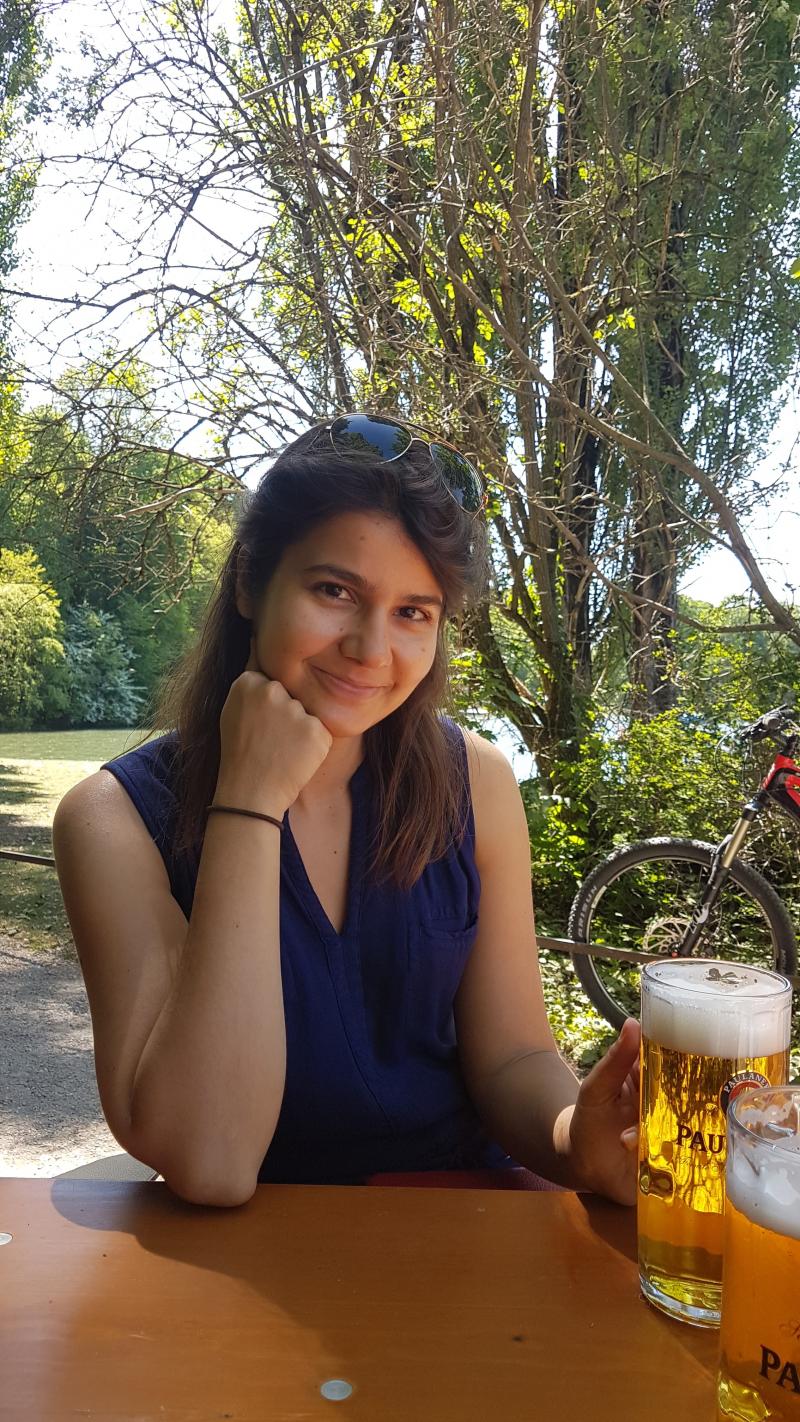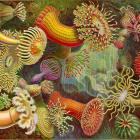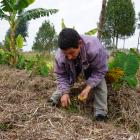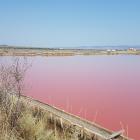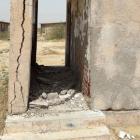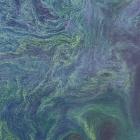Salt Symbiosis on the Black Sea (Bulgaria)
Anna Antonova
Antonova, Anna. Salt Symbiosis on the Black Sea. 2018. HD, 4 min. https://youtu.be/W6-1aBAhJ_U. Video editing by Miriam Remter and Felix Remter (Primate Visions, Munich). CC BY 4.0.
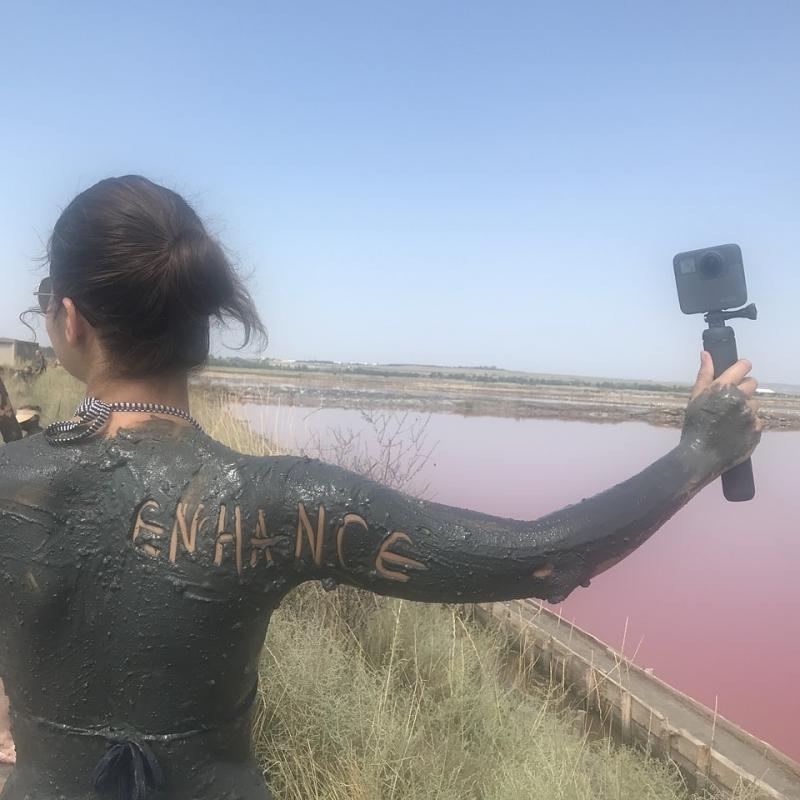
Anna Antonova from the ENHANCE ITN project at the Black Sea holding a 360° video camera. Photograph by Anna Antonova. CC BY 4.0.
Anna Antonova from the ENHANCE ITN project at the Black Sea holding a 360° video camera. Photograph by Anna Antonova. CC BY 4.0.
Photograph by Anna Antonova.
 This work is licensed under a Creative Commons Attribution 4.0 International License.
This work is licensed under a Creative Commons Attribution 4.0 International License.
This video immerses the viewer in a unique habitat on the Bulgarian coast of the Black Sea: the salt flats in the Atanasovsko Lake near the city of Burgas. Salt flats, like these, are a natural symbiosis between humans and their coastal environment. They support traditional human labor and industry, their mud can be used as a natural spa with proven health benefits, and at the same time, the dikes provide nesting habitats for migratory bird species, while the shallow waters perform important nursery functions for the aquatic ecosystem. For these reasons, many local non-governmental organizations, such as Green Balkans and the Bulgarian Biodiversity Foundation, aim to promote and popularize the salt flats amongst community members and tourists alike.
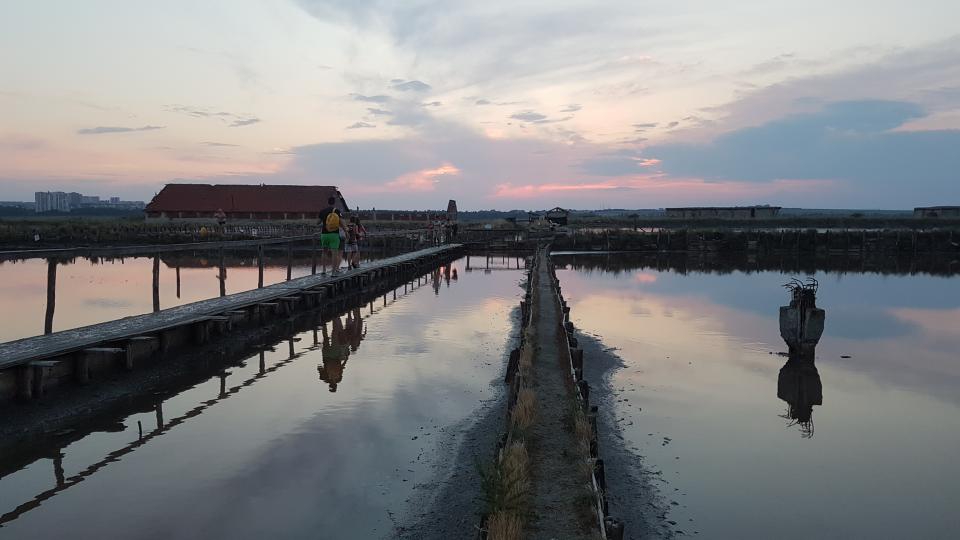
Sunset at the Atanasovsko Lake salt flats. To the far left, the outskirts of Burgas city neighbor the lake. Photograph by Anna Antanova. CC BY 4.0.
Sunset at the Atanasovsko Lake salt flats. To the far left, the outskirts of Burgas city neighbor the lake. Photograph by Anna Antanova. CC BY 4.0.
Photograph by Anna Antanova.
 This work is licensed under a Creative Commons Attribution 4.0 International License.
This work is licensed under a Creative Commons Attribution 4.0 International License.
Sadly, these kinds of environments are increasingly rarer along the Bulgarian coastline. In the Burgas region, salt production was once the most prominent industry; today, although salt is still being produced here, tourism plays a much more important role in the local economy. As one of the main strategic pillars for the Bulgarian economy as a whole, the tourist industry comes with environmental pressures that have often entered in direct conflict with the salt flats ecosystem. In past decades, many salt flats on this part of the coastline have been filled in to support tourism-related construction. For local human and nonhuman communities, this not only represents a material change in the environment, but also a profound change in how lives subsist on the coastline.
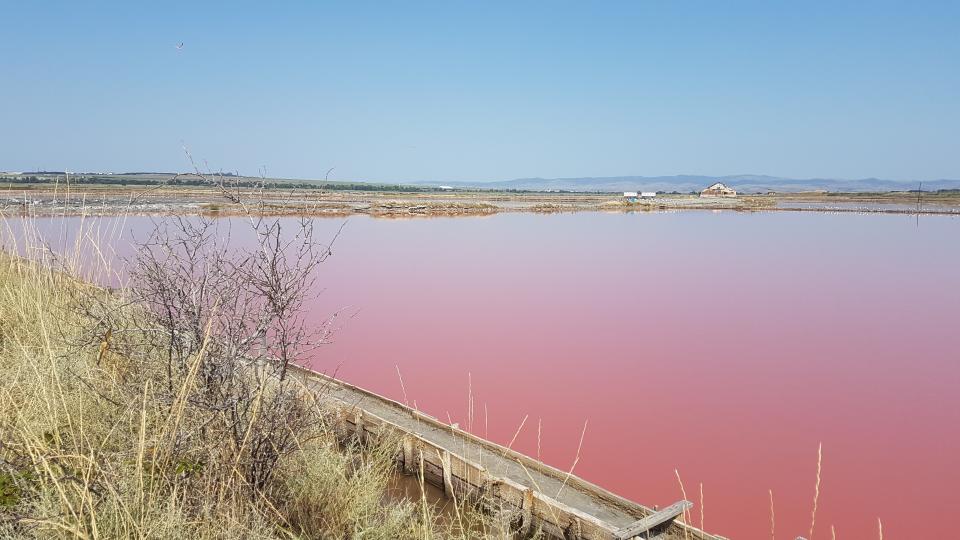
The Atanasovsko Lake salt flats. The recognizable bright red color comes from the water’s extremely high levels of salinity and the specific microorganisms living in it. Photograph by Anna Antanova. CC BY 4.0.
The Atanasovsko Lake salt flats. The recognizable bright red color comes from the water’s extremely high levels of salinity and the specific microorganisms living in it. Photograph by Anna Antanova. CC BY 4.0.
Photograph by Anna Antanova.
 This work is licensed under a Creative Commons Attribution 4.0 International License.
This work is licensed under a Creative Commons Attribution 4.0 International License.
Ultimately, when coasts change, societies change with them; not only in terms of their economies, political systems, or legislation but also in terms of the stories they tell about themselves and their relationships to their landscape. The salt flats, and how we might feel as we stroll through them, are a reflection of that.
About the author
Anna S. Antonova is a Marie Skłodowska-Curie Research Fellow with the ENHANCE innovative training network at the University of Leeds, Leeds, UK. Her research brings together humanities and social science approaches to examine how societal relations with and within coastal landscapes evolve over time, especially under pressure from global environmental, political, and economic changes. Her doctoral research at the University of Leeds examined transformations, crises, and contestations in narratives about environment and society on two European coasts, the Bulgarian Black Sea and the Yorkshire North Sea. She has previously worked on the external dimension of the EU’s Common Fisheries Policy.


